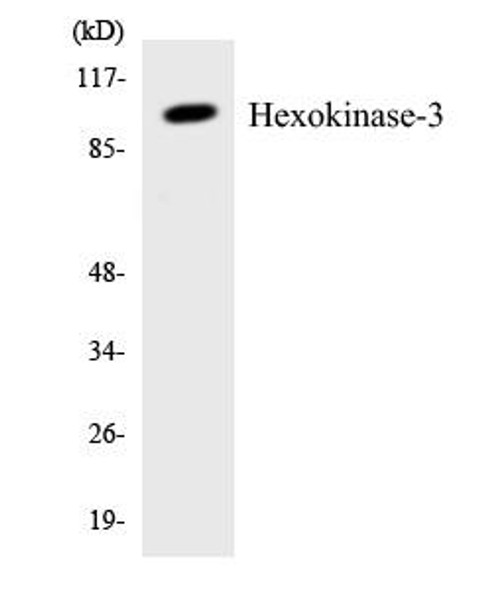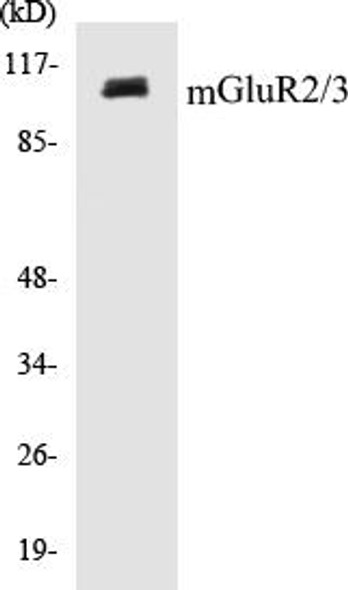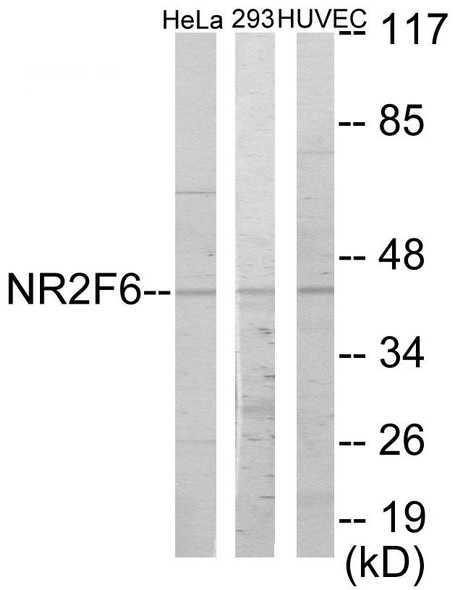Description
NFIL-3 Colorimetric Cell-Based ELISA
The NFIL3 Colorimetric Cell-Based ELISA Kit is a cutting-edge tool for researchers looking to study the NFIL3 protein in cell culture experiments. This kit offers high sensitivity and specificity, allowing for accurate measurements of NFIL3 levels in cell lysates. NFIL3, also known as E4BP4, is a key transcription factor that plays a crucial role in regulating the immune response and circadian rhythm. By studying NFIL3 levels in cell culture, researchers can gain valuable insights into the molecular mechanisms underlying various diseases, including immune disorders and sleep disorders.
With its user-friendly protocol and reliable results, the NFIL3 Colorimetric Cell-Based ELISA Kit is a valuable resource for researchers seeking to deepen their understanding of NFIL3 biology and its implications for human health.
| Product Name: | NFIL3 Colorimetric Cell-Based ELISA |
| Product Code: | CBCAB01120 |
| ELISA Type: | Cell-Based |
| Target: | NFIL3 |
| Reactivity: | Human, Mouse, Rat |
| Dynamic Range: | > 5000 Cells |
| Detection Method: | Colorimetric 450 nmStorage/Stability:4°C/6 Months |
| Format: | 96-Well Microplate |
The NFIL3 Colorimetric Cell-Based ELISA Kit is a convenient, lysate-free, high throughput and sensitive assay kit that can detect NFIL3 protein expression profile in cells. The kit can be used for measuring the relative amounts of NFIL3 in cultured cells as well as screening for the effects that various treatments, inhibitors (ie siRNA or chemicals), or activators have on NFIL3.
Qualitative determination of NFIL3 concentration is achieved by an indirect ELISA format. In essence, NFIL3 is captured by NFIL3-specific primary antibodies while the HRP-conjugated secondary antibodies bind the Fc region of the primary antibody. Through this binding, the HRP enzyme conjugated to the secondary antibody can catalyze a colorimetric reaction upon substrate addition. Due to the qualitative nature of the Cell-Based ELISA, multiple normalization methods are needed:
| 1. | A monoclonal antibody specific for human GAPDH is included to serve as an internal positive control in normalizing the target absorbance values. |
| 2. | Following the colorimetric measurement of HRP activity via substrate addition, the Crystal Violet whole-cell staining method may be used to determine cell density. After staining, the results can be analysed by normalizing the absorbance values to cell amounts, by which the plating difference can be adjusted. |
| Database Information: | Gene ID: 4783, UniProt ID: Q16649, OMIM: 605327, Unigene: Hs.79334 |
| Gene Symbol: | NFIL3 |
| Sub Type: | None |
| UniProt Protein Function: | E4BP4: Acts as a transcriptional regulator that recognizes and binds to the sequence 5'-[GA]TTA[CT]GTAA[CT]-3', a sequence present in many cellular and viral promoters. Represses transcription from promoters with activating transcription factor (ATF) sites. Represses promoter activity in osteoblasts. Represses transcriptional activity of PER1. Represses transcriptional activity of PER2 via the B- site on the promoter. Activates transcription from the interleukin-3 promoter in T-cells. Competes for the same consensus-binding site with PAR DNA-binding factors (DBP, HLF and TEF). Component of the circadian clock that acts as a negative regulator for the circadian expression of PER2 oscillation in the cell-autonomous core clock. Protects pro-B cells from programmed cell death. Belongs to the bZIP family. NFIL3 subfamily. |
| UniProt Protein Details: | Protein type:DNA-binding; Transcription factor Chromosomal Location of Human Ortholog: 9q22 Cellular Component: nucleus Molecular Function:DNA binding; transcription corepressor activity; transcription factor activity Biological Process: circadian rhythm; transcription from RNA polymerase II promoter; immune response; negative regulation of transcription from RNA polymerase II promoter |
| NCBI Summary: | The protein encoded by this gene is a transcriptional regulator that binds as a homodimer to activating transcription factor (ATF) sites in many cellular and viral promoters. The encoded protein represses PER1 and PER2 expression and therefore plays a role in the regulation of circadian rhythm. Three transcript variants encoding the same protein have been found for this gene. [provided by RefSeq, Feb 2014] |
| UniProt Code: | Q16649 |
| NCBI GenInfo Identifier: | 150385077 |
| NCBI Gene ID: | 4783 |
| NCBI Accession: | Q16649.2 |
| UniProt Secondary Accession: | Q16649,Q14211, Q6FGQ8, Q96HS0, B2R9Y8, |
| UniProt Related Accession: | Q16649 |
| Molecular Weight: | Calculated MW:51kDaObserved MW: 55kDa |
| NCBI Full Name: | Nuclear factor interleukin-3-regulated protein |
| NCBI Synonym Full Names: | nuclear factor, interleukin 3 regulated |
| NCBI Official Symbol: | NFIL3 |
| NCBI Official Synonym Symbols: | E4BP4; IL3BP1; NFIL3A; NF-IL3A |
| NCBI Protein Information: | nuclear factor interleukin-3-regulated protein; E4 promoter-binding protein 4; interleukin-3-binding protein 1; transcriptional activator NF-IL3A; nuclear factor interleukin 3 regulated protein; interleukin-3 promoter transcriptional activator |
| UniProt Protein Name: | Nuclear factor interleukin-3-regulated protein |
| UniProt Synonym Protein Names: | E4 promoter-binding protein 4; Interleukin-3 promoter transcriptional activator; Interleukin-3-binding protein 1; Transcriptional activator NF-IL3A |
| Protein Family: | Nuclear factor interleukin-3-regulated protein |
| UniProt Gene Name: | NFIL3 |
| UniProt Entry Name: | NFIL3_HUMAN |
| Component | Quantity |
| 96-Well Cell Culture Clear-Bottom Microplate | 2 plates |
| 10X TBS | 24 mL |
| Quenching Buffer | 24 mL |
| Blocking Buffer | 50 mL |
| 15X Wash Buffer | 50 mL |
| Primary Antibody Diluent | 12 mL |
| 100x Anti-Phospho Target Antibody | 60 µL |
| 100x Anti-Target Antibody | 60 µL |
| Anti-GAPDH Antibody | 60 µL |
| HRP-Conjugated Anti-Rabbit IgG Antibody | 12 mL |
| HRP-Conjugated Anti-Mouse IgG Antibody | 12 mL |
| SDS Solution | 12 mL |
| Stop Solution | 24 mL |
| Ready-to-Use Substrate | 12 mL |
| Crystal Violet Solution | 12 mL |
| Adhesive Plate Seals | 2 seals |
The following materials and/or equipment are NOT provided in this kit but are necessary to successfully conduct the experiment:
- Microplate reader able to measure absorbance at 450 nm and/or 595 nm for Crystal Violet Cell Staining (Optional)
- Micropipettes with capability of measuring volumes ranging from 1 µL to 1 ml
- 37% formaldehyde (Sigma Cat# F-8775) or formaldehyde from other sources
- Squirt bottle, manifold dispenser, multichannel pipette reservoir or automated microplate washer
- Graph paper or computer software capable of generating or displaying logarithmic functions
- Absorbent papers or vacuum aspirator
- Test tubes or microfuge tubes capable of storing ≥1 ml
- Poly-L-Lysine (Sigma Cat# P4832 for suspension cells)
- Orbital shaker (optional)
- Deionized or sterile water
*Note: Protocols are specific to each batch/lot. For the correct instructions please follow the protocol included in your kit.
| Step | Procedure |
| 1. | Seed 200 µL of 20,000 adherent cells in culture medium in each well of a 96-well plate. The plates included in the kit are sterile and treated for cell culture. For suspension cells and loosely attached cells, coat the plates with 100 µL of 10 µg/ml Poly-L-Lysine (not included) to each well of a 96-well plate for 30 minutes at 37°C prior to adding cells. |
| 2. | Incubate the cells for overnight at 37°C, 5% CO2. |
| 3. | Treat the cells as desired. |
| 4. | Remove the cell culture medium and rinse with 200 µL of 1x TBS, twice. |
| 5. | Fix the cells by incubating with 100 µL of Fixing Solution for 20 minutes at room temperature. The 4% formaldehyde is used for adherent cells and 8% formaldehyde is used for suspension cells and loosely attached cells. |
| 6. | Remove the Fixing Solution and wash the plate 3 times with 200 µL 1x Wash Buffer for five minutes each time with gentle shaking on the orbital shaker. The plate can be stored at 4°C for a week. |
| 7. | Add 100 µL of Quenching Buffer and incubate for 20 minutes at room temperature. |
| 8. | Wash the plate 3 times with 1x Wash Buffer for 5 minutes each time. |
| 9. | Add 200 µL of Blocking Buffer and incubate for 1 hour at room temperature. |
| 10. | Wash 3 times with 200 µL of 1x Wash Buffer for 5 minutes each time. |
| 11. | Add 50 µL of 1x primary antibodies (Anti-NFIL3 Antibody and/or Anti-GAPDH Antibody) to the corresponding wells, cover with Parafilm and incubate for 16 hours (overnight) at 4°C. If the target expression is known to be high, incubate for 2 hours at room temperature. |
| 12. | Wash 3 times with 200 µL of 1x Wash Buffer for 5 minutes each time. |
| 13. | Add 50 µL of 1x secondary antibodies (HRP-Conjugated AntiRabbit IgG Antibody or HRP-Conjugated Anti-Mouse IgG Antibody) to corresponding wells and incubate for 1.5 hours at room temperature. |
| 14. | Wash 3 times with 200 µL of 1x Wash Buffer for 5 minutes each time. |
| 15. | Add 50 µL of Ready-to-Use Substrate to each well and incubate for 30 minutes at room temperature in the dark. |
| 16. | Add 50 µL of Stop Solution to each well and read OD at 450 nm immediately using the microplate reader. |
(Additional Crystal Violet staining may be performed if desired – details of this may be found in the kit technical manual.)






